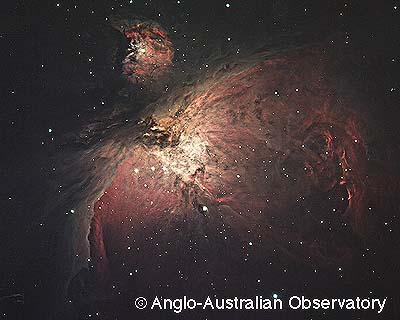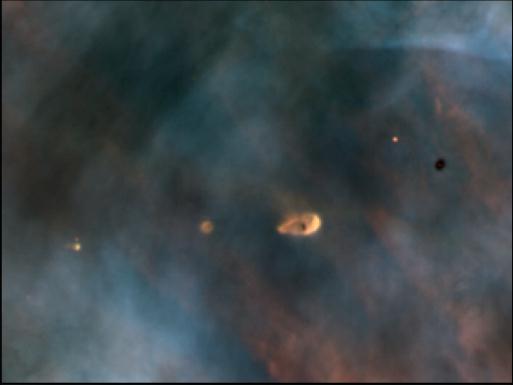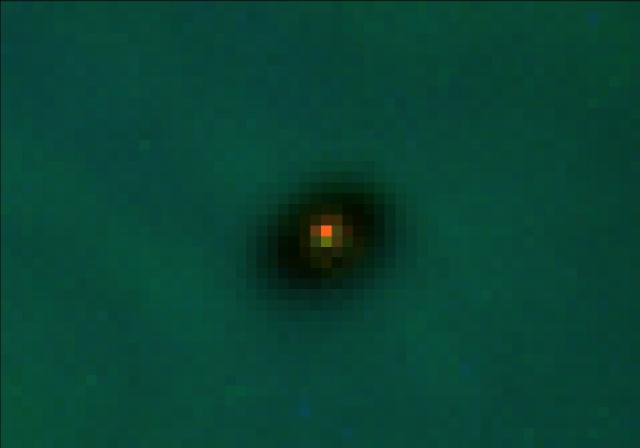
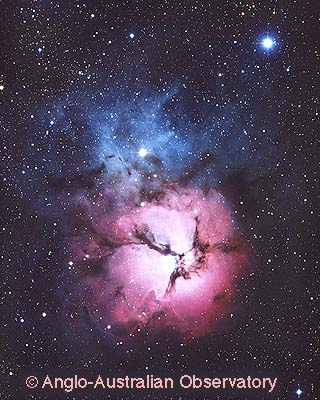 Intergalactic
space is filled with clouds of gas (mostly H2 + He) and dust
known as molecular clouds. Within these clouds there are also dense lumps
known as molecular cores:
Intergalactic
space is filled with clouds of gas (mostly H2 + He) and dust
known as molecular clouds. Within these clouds there are also dense lumps
known as molecular cores:
|
|
|
|
|
|
|
|
|
|
|
|
|
|
|
These clouds are often supported against gravitational collapse by their thermal pressure, but if they become too massive, gravity wins and they can start to collapse. This critical mass is referred to as the Jeans mass:

Gravity is a central force -- it draws material in radially. So why doesn't it all collapse into a ball?
Angular Momentum
All clouds rotate, at least a little, due to gravitational shearing in the galaxy's disk. And if a cloud rotates, it has angular momentum:
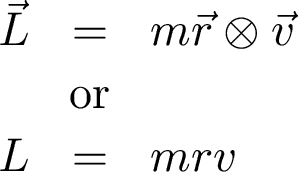
And remember that angular momentum is conserved. So if a rotating cloud collapses (r gets smaller) than it must spin faster (v gets bigger). Even a little pre-collapse spin goes a long way!
How does rotation affect collapse? It adds a centripetal force term to the collapse. For a particle of mass m on the edge of the cloud, the force on it depends whether it is on the rotation pole or the equator:

So as the cloud collapses, material along the spin axis can collapse onto the star, but material in the spin plane has collapse halted by centripetal force. A disk is formed!
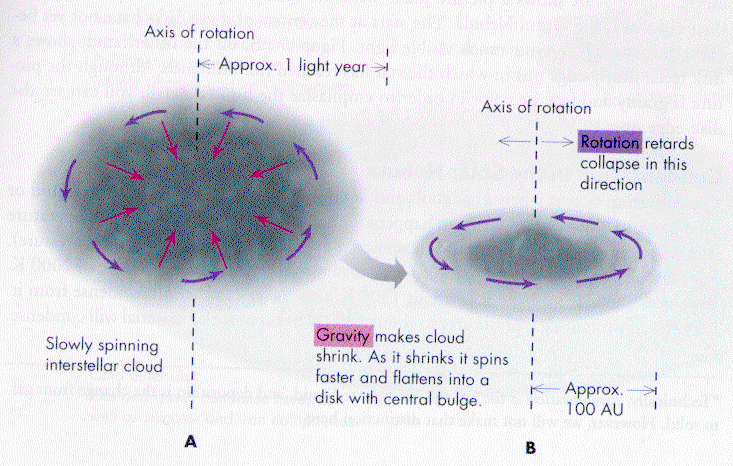
What about the central mass -- the protostar itself?
Remember from our discussion of the Sun that as a ball of gas collapses, it radiates away half of the gravitational energy. What happens to the other half? It heats up the collapsing cloud.
So the very central portions of the cloud are getting denser and hotter. Eventually the density and temperature will become high enough that nuclear reactions will begin to take place. A star is born!
The high central density and temperature also create sufficient pressure (via the ideal gas law) inside the star to halt gravitational collapse. The young star is now in hydrostatic equilibrium.
Yes! We see these stars and young disks in nearby star forming regions:
The Orion Nebula
